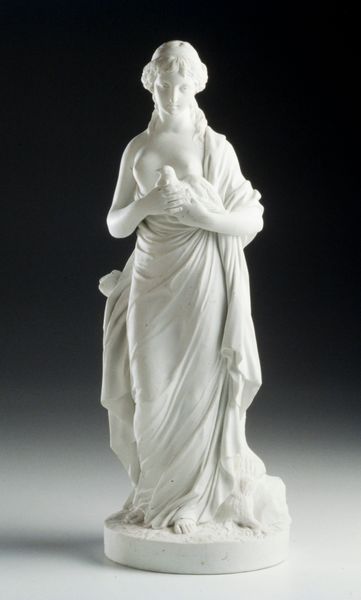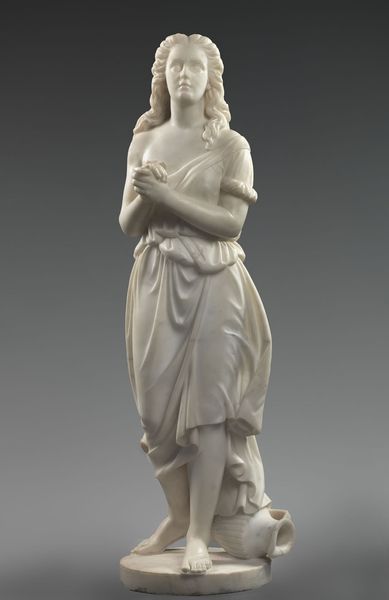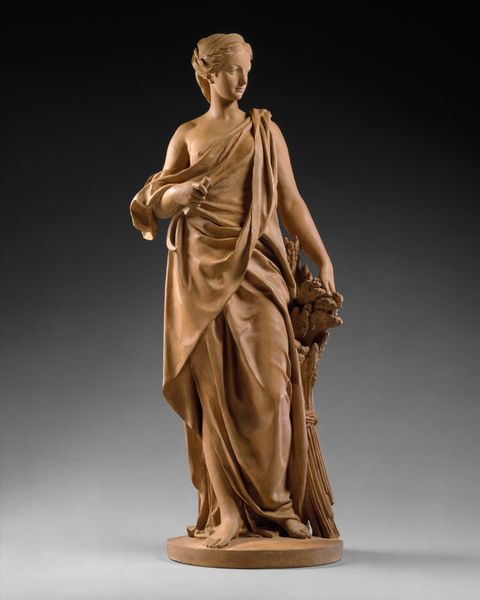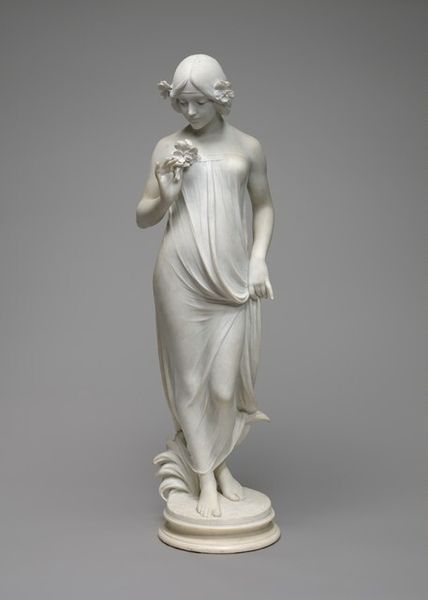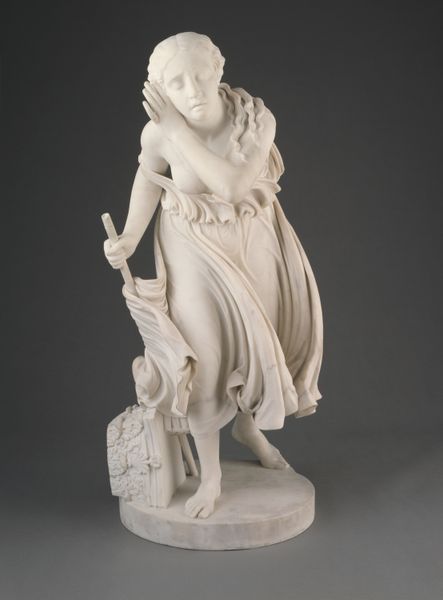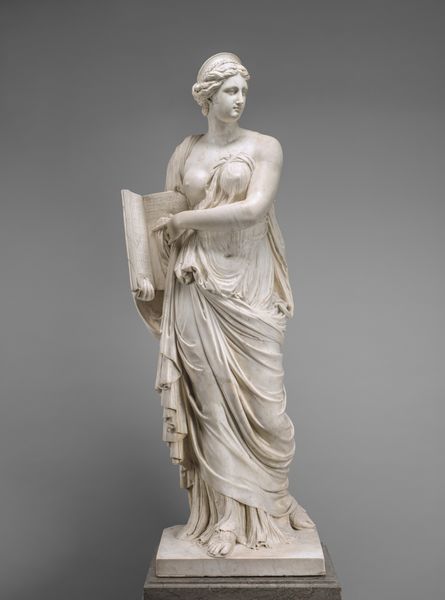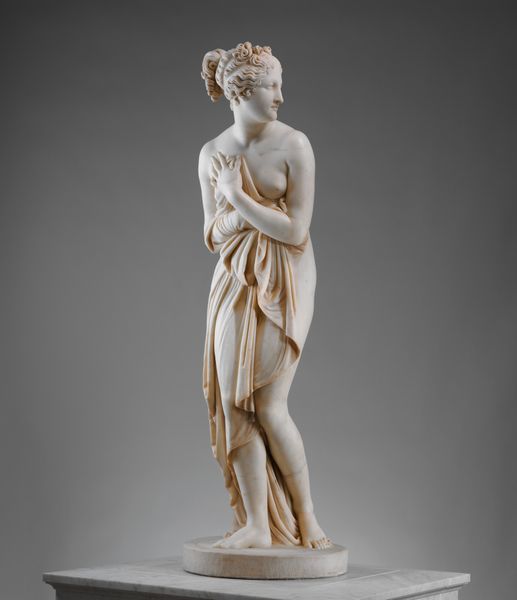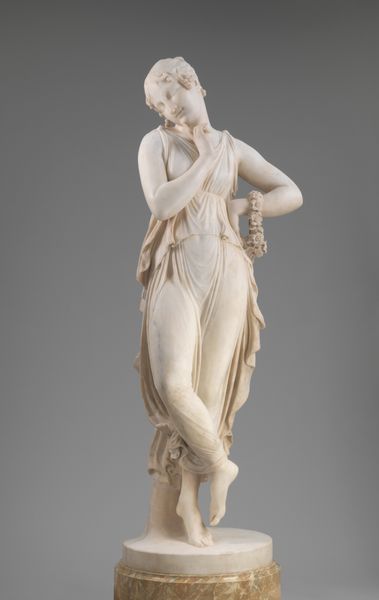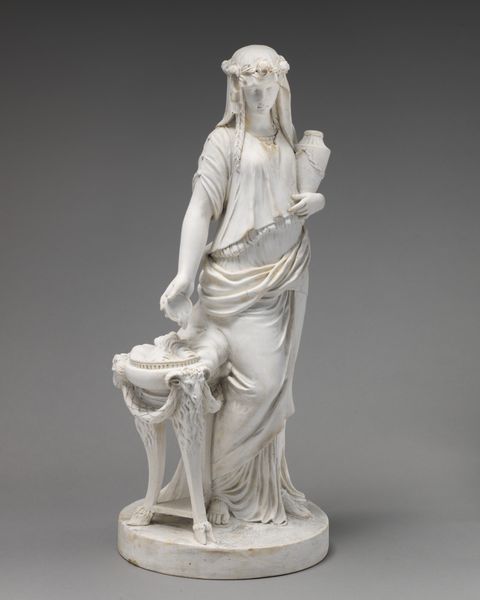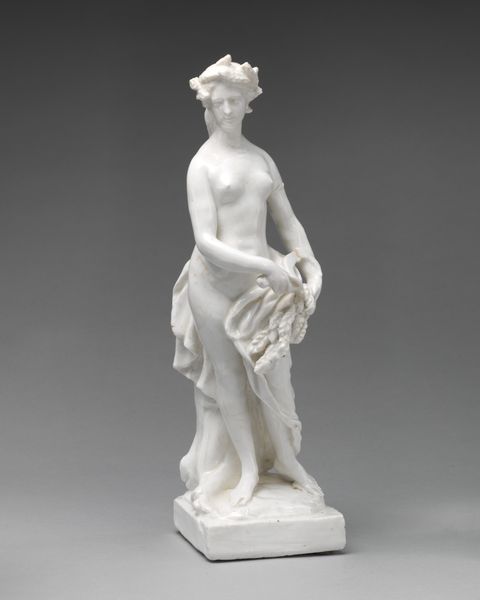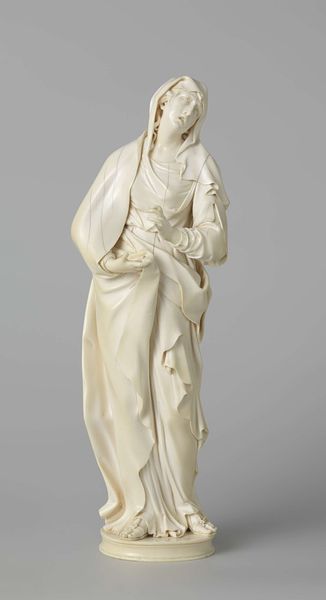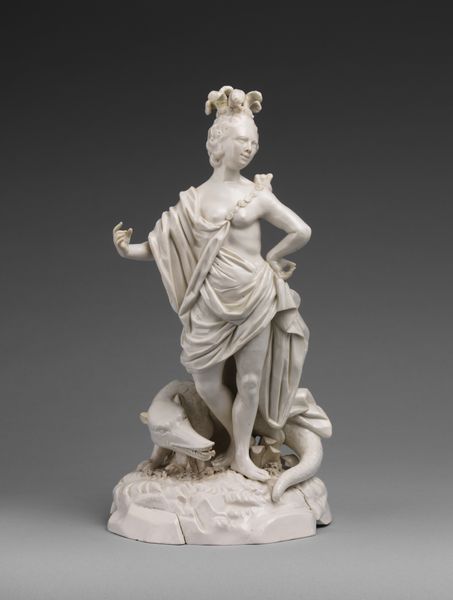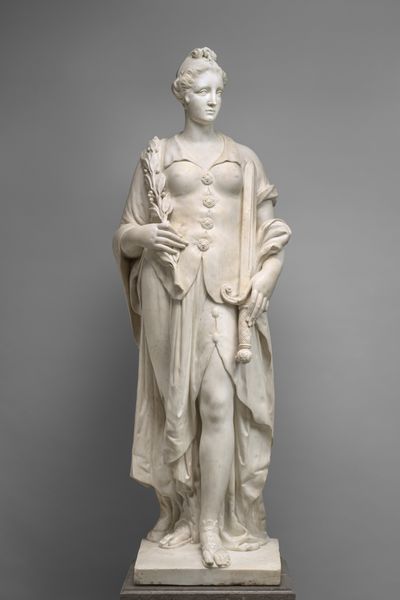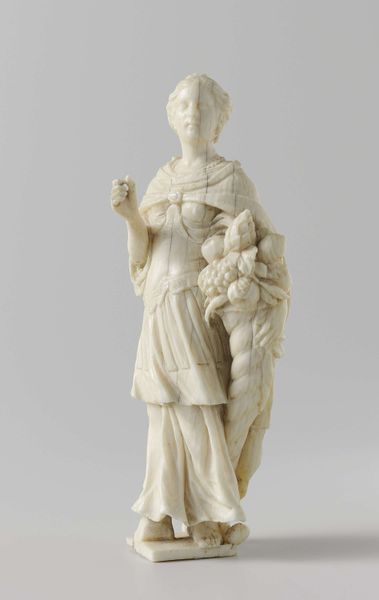
ceramic, porcelain, sculpture
#
portrait
#
historical design
#
neoclacissism
#
allegory
#
ceramic
#
porcelain
#
figuration
#
sculpture
#
decorative-art
Dimensions: 21.1 × 9.2 cm (8 5/16 × 3 5/8 in.)
Copyright: Public Domain
Curator: Standing before us is a porcelain sculpture entitled "Allegorical Figure of Columbia," crafted around 1800. It resides here at The Art Institute of Chicago. Editor: The sheer whiteness strikes me first. It's almost ethereal, like a spirit materialized. The gold accents, particularly that small eagle atop the flagpole, offer a contrasting regality. Curator: Absolutely. Columbia, as an allegorical figure, gained popularity during the late 18th and early 19th centuries, representing the United States in a classical guise. Her imagery frequently appeared during a pivotal moment in early nation-building, when the US was constructing its own unique cultural and political identity. Editor: The diadem she wears evokes classical deities, but also emphasizes power and authority. What is she holding, precisely? It looks like she might be safeguarding liberty. The whiteness could also imply purity of vision or righteousness of purpose. Curator: The figure bears a flag, and atop of it you find an eagle that suggests an official, national standard, as does the name inscription along the base, lending that exact same concept to her name; but more critically, to the new republic's burgeoning persona. Notice how her classical robes and serene expression reinforce republican ideals while nodding to historical precedents, such as ancient Greece. She’s not just a person, she embodies an entire country. Editor: The Minton factory likely capitalized on this emerging patriotism. It’s shrewd how they tied their artistry into this larger national narrative and patriotic themes during those times. Did Columbia as a concept face challenges? I would assume her appeal may not have extended across all societal sectors at the time. Curator: Undoubtedly. The image of Columbia was embraced by certain groups while other segments of society, especially enslaved populations, would have found it to be in stark contradiction with the promises the allegory professed. Editor: So even then, visual messaging was fraught, a battleground for contesting the very meaning of the nation. Curator: Precisely, visual representations served both to promote and at the very same time conceal critical historical contradictions. Editor: It truly encapsulates how loaded an image can become, how potent symbols operate within specific socio-political conditions. Thanks, this made me reflect more about national iconography.
Comments
No comments
Be the first to comment and join the conversation on the ultimate creative platform.
